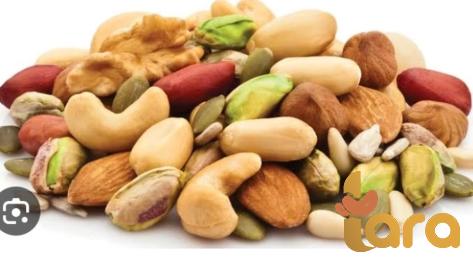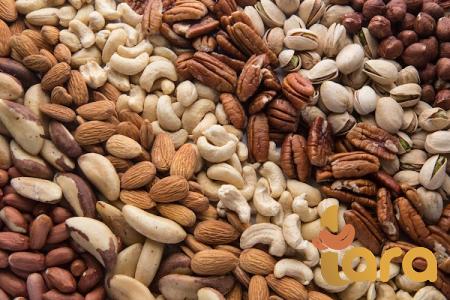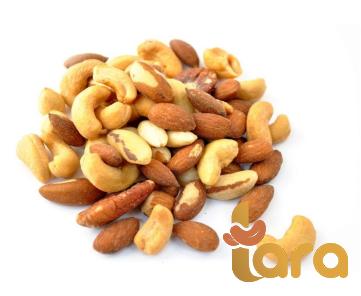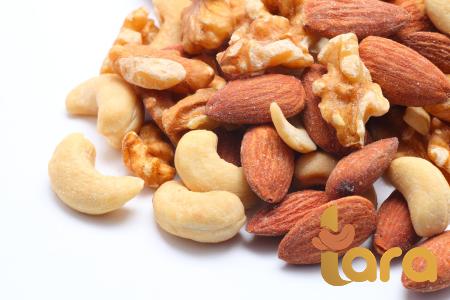American Sign Language (ASL) is a rich and expressive language that uses hand gestures, facial expressions, and body movements to convey meaning and communicate with others. One of the fascinating aspects of ASL is how it can be used to express concepts and ideas that may not have a direct translation in spoken languages. In this article, we will explore the sign for “peanut” in ASL and delve into the intricacies of its meaning and usage. When it comes to signing “peanut” in ASL, there are a couple of different signs that can be used. The first sign involves forming the letter ‘P’ with your dominant hand, placing it near your chin, and then moving it down in a wiggling motion, as if simulating the opening of a peanut shell. This sign is a visual representation of the action of cracking open a peanut shell to reveal the nut inside. Another common way to sign “peanut” in ASL is by using a classifier handshape to represent the size and shape of a peanut. In this sign, the fingers of the dominant hand are brought together to form a small, round shape, mimicking the size of a peanut.

.
 This sign is a more abstract representation of the concept of a peanut, focusing on its physical attributes rather than the action of opening its shell. The sign for “peanut” in ASL can also be modified to convey different meanings or nuances. For example, adding a facial expression of delight or excitement while signing “peanut” can indicate that someone is happy or enthusiastic about eating peanuts. On the other hand, using a more neutral facial expression can convey a sense of neutrality or indifference towards peanuts. In addition to its literal meaning, the sign for “peanut” in ASL can also be used metaphorically to express other concepts or ideas. For example, signing “peanut” in conjunction with the sign for “small” can convey the idea of something being small or insignificant, similar to the English expression “a small fry.” This demonstrates the flexibility and versatility of ASL as a language that can adapt and evolve to express a wide range of meanings and nuances. Furthermore, the sign for “peanut” in ASL can also be incorporated into storytelling or narrative signing to enhance the visual and sensory experience for the audience. By using expressive body movements and facial expressions in conjunction with the sign for “peanut,” signers can create a vivid and engaging portrayal of scenes involving peanuts, such as a farmer harvesting a field of peanuts or a child enjoying a peanut butter sandwich. Overall, the sign for “peanut” in ASL is a versatile and dynamic gesture that can convey a multitude of meanings and emotions. Whether used in its literal sense to refer to the nut itself or in a more metaphorical context to express concepts of size or significance, the sign for “peanut” demonstrates the richness and complexity of ASL as a language that transcends linguistic boundaries.
This sign is a more abstract representation of the concept of a peanut, focusing on its physical attributes rather than the action of opening its shell. The sign for “peanut” in ASL can also be modified to convey different meanings or nuances. For example, adding a facial expression of delight or excitement while signing “peanut” can indicate that someone is happy or enthusiastic about eating peanuts. On the other hand, using a more neutral facial expression can convey a sense of neutrality or indifference towards peanuts. In addition to its literal meaning, the sign for “peanut” in ASL can also be used metaphorically to express other concepts or ideas. For example, signing “peanut” in conjunction with the sign for “small” can convey the idea of something being small or insignificant, similar to the English expression “a small fry.” This demonstrates the flexibility and versatility of ASL as a language that can adapt and evolve to express a wide range of meanings and nuances. Furthermore, the sign for “peanut” in ASL can also be incorporated into storytelling or narrative signing to enhance the visual and sensory experience for the audience. By using expressive body movements and facial expressions in conjunction with the sign for “peanut,” signers can create a vivid and engaging portrayal of scenes involving peanuts, such as a farmer harvesting a field of peanuts or a child enjoying a peanut butter sandwich. Overall, the sign for “peanut” in ASL is a versatile and dynamic gesture that can convey a multitude of meanings and emotions. Whether used in its literal sense to refer to the nut itself or in a more metaphorical context to express concepts of size or significance, the sign for “peanut” demonstrates the richness and complexity of ASL as a language that transcends linguistic boundaries.
..
 In conclusion, the sign for “peanut” in ASL is a powerful and evocative gesture that can add depth and nuance to communication. By understanding the various ways in which this sign can be used and modified to convey different meanings, signers can enhance their ability to express themselves and connect with others in a meaningful way. So next time you sign “peanut” in ASL, remember the multitude of meanings and possibilities that this simple gesture can encompass. The sign for “peanut” in ASL is not just a gesture to represent a food item; it is a window into the world of sign language and the rich culture that surrounds it. ASL is a language that is not only about communicating words and sentences but also about expressing emotions, experiences, and perspectives. The sign for “peanut” embodies this idea by serving as a gateway to deeper meanings and connections within the deaf community. In addition to its linguistic implications, the sign for “peanut” in ASL holds cultural significance within the deaf community. Like other signs in ASL, the sign for “peanut” is passed down through generations and carries with it the history and traditions of the deaf community. By learning and using this sign, individuals are not only communicating in a visual and expressive language but also participating in a shared cultural heritage that spans centuries. Moreover, the sign for “peanut” in ASL highlights the importance of visual communication and nonverbal expression in deaf culture. ASL is a language that relies on gestures, facial expressions, and body movements to convey meaning, making it a unique and powerful mode of communication. The sign for “peanut” exemplifies how ASL can capture the essence of an object or concept through visual representation, demonstrating the creativity and ingenuity of sign language users.
In conclusion, the sign for “peanut” in ASL is a powerful and evocative gesture that can add depth and nuance to communication. By understanding the various ways in which this sign can be used and modified to convey different meanings, signers can enhance their ability to express themselves and connect with others in a meaningful way. So next time you sign “peanut” in ASL, remember the multitude of meanings and possibilities that this simple gesture can encompass. The sign for “peanut” in ASL is not just a gesture to represent a food item; it is a window into the world of sign language and the rich culture that surrounds it. ASL is a language that is not only about communicating words and sentences but also about expressing emotions, experiences, and perspectives. The sign for “peanut” embodies this idea by serving as a gateway to deeper meanings and connections within the deaf community. In addition to its linguistic implications, the sign for “peanut” in ASL holds cultural significance within the deaf community. Like other signs in ASL, the sign for “peanut” is passed down through generations and carries with it the history and traditions of the deaf community. By learning and using this sign, individuals are not only communicating in a visual and expressive language but also participating in a shared cultural heritage that spans centuries. Moreover, the sign for “peanut” in ASL highlights the importance of visual communication and nonverbal expression in deaf culture. ASL is a language that relies on gestures, facial expressions, and body movements to convey meaning, making it a unique and powerful mode of communication. The sign for “peanut” exemplifies how ASL can capture the essence of an object or concept through visual representation, demonstrating the creativity and ingenuity of sign language users.
…
 Furthermore, the sign for “peanut” in ASL serves as a reminder of the diversity and richness of deaf culture. Deaf individuals come from a variety of backgrounds, experiences, and perspectives, and ASL is a unifying force that connects them through a shared language and identity. The sign for “peanut” represents a small yet significant piece of this larger cultural tapestry, showcasing the vibrant and dynamic nature of deaf culture. In a broader context, the sign for “peanut” in ASL underscores the importance of inclusivity and accessibility in communication. ASL provides a means for deaf individuals to express themselves and engage with the world around them on their own terms, breaking down barriers and creating opportunities for meaningful interaction. By recognizing and embracing diverse forms of communication, we can foster a more inclusive and equitable society for all individuals, regardless of their hearing ability. In conclusion, the sign for “peanut” in ASL is more than just a gesture; it is a symbol of language, culture, and community. By exploring the various meanings and implications of this sign, we gain insight into the intricate and multifaceted nature of sign language and its impact on the deaf community. Through the sign for “peanut,” we can appreciate the beauty and complexity of ASL as a language that transcends words and connects us in profound and meaningful ways. Sign “peanut” in ASL, and you are not just signing a word – you are joining a vibrant and diverse community that celebrates expression, communication, and connection.
Furthermore, the sign for “peanut” in ASL serves as a reminder of the diversity and richness of deaf culture. Deaf individuals come from a variety of backgrounds, experiences, and perspectives, and ASL is a unifying force that connects them through a shared language and identity. The sign for “peanut” represents a small yet significant piece of this larger cultural tapestry, showcasing the vibrant and dynamic nature of deaf culture. In a broader context, the sign for “peanut” in ASL underscores the importance of inclusivity and accessibility in communication. ASL provides a means for deaf individuals to express themselves and engage with the world around them on their own terms, breaking down barriers and creating opportunities for meaningful interaction. By recognizing and embracing diverse forms of communication, we can foster a more inclusive and equitable society for all individuals, regardless of their hearing ability. In conclusion, the sign for “peanut” in ASL is more than just a gesture; it is a symbol of language, culture, and community. By exploring the various meanings and implications of this sign, we gain insight into the intricate and multifaceted nature of sign language and its impact on the deaf community. Through the sign for “peanut,” we can appreciate the beauty and complexity of ASL as a language that transcends words and connects us in profound and meaningful ways. Sign “peanut” in ASL, and you are not just signing a word – you are joining a vibrant and diverse community that celebrates expression, communication, and connection.











Your comment submitted.